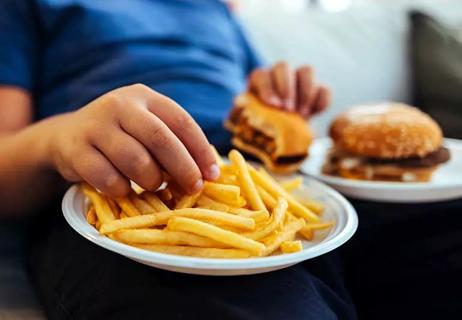There’s a fine line between emotional and physical hunger

We eat when we’re stressed and upset. We eat when we’re happy and celebrating. And sometimes (often times) we eat out of sheer boredom.
Advertisement
Cleveland Clinic is a non-profit academic medical center. Advertising on our site helps support our mission. We do not endorse non-Cleveland Clinic products or services. Policy
“Boredom is probably the number 1 emotional type of hunger,” says psychologist Susan Albers, PsyD. “We often ignore, avoid or negotiate our true hunger signs – including when we’re already full and just looking for something to entertain us.”
But the thing is, there’s a difference between true physical hunger and emotional hunger.
Physical hunger is gradual and tied to the last time you ate. While emotional hunger is triggered by things such as stress, worry or fatigue.
The most important thing you can do when you’re about to eat or if you think you might be hungry is to interview your hunger before acting on it, says Dr. Albers. Ask yourself: what do I want to eat and why do I want it right now?
It’s important to take your hunger thought seriously, but pause and try to figure out what’s going on first. Are you really hungry? Or are you just upset about something?
Often times, emotional hunger is your body’s way of telling you that you need comfort or something soothing. Instead of actually being hungry, maybe you just need a quick break or a walk outside to relieve some stress. Energy level is a big part of hunger too. If you back up and think about it first, you might find that it’s just low energy or your mind is wandering off.
“Identify what it is that you’re feeling and find the appropriate emotion that goes with it,” says Dr. Albers. “If you’re stressed find something that relaxes you. Or if you’re bored find something that’s going to entertain you for a little bit.”
Advertisement
Cravings are another cue that your emotions might be dictating your hunger. You can usually tell the difference between needing something to eat to fuel your body and a craving, which is just emotional hunger wearing a mask.
Maybe your body is craving a specific kind of chocolate because you’re feeling anxious. Or maybe you think you’re craving a big bowl of mac and cheese, but you’re actually just sad about some news you got.
Another reason for emotional eating? Too much distraction.
“People tend to overlook their emotional hunger and confuse it with real hunger because they’re on their phone or in front of the computer,” says Dr. Albers. “A good rule of thumb is that when you eat – just eat. Don’t eat in front of the TV or while mindlessly scrolling through your phone.”
Along the lines of emotional eating is being hangry – and yes it’s a real thing.
Often times people take the “wait and see” approach when it comes to hunger. The next thing you know you’re angry, starving and making a b-line for anything you can get your hands on.
But if you learn your real signs of hunger by its clues and subtle signs, you can avoid letting your hunger take over.
“Instead of waiting to see how your hunger goes throughout the day, be proactive about knowing when you typically get hungry,” explains Dr. Albers. “Maybe you know you get hungry everyday around 10 a.m. or you need an earlier lunch than most people. Be mindful about your hunger patterns.”
Dr. Albers recommends using new language around your hunger.
Instead of asking yourself if you’re full, ask if you’re satisfied by what you’re eating. Instead of asking what you want, ask what you need right now.
“Usually if you ask ‘what do I want to eat’ there is a huge range,” says Dr. Albers. “But asking ‘what do I need?’ helps you be more specific and mindful.”
If you think you might be dealing with emotional hunger, follow these tips:
Look for something soothing or comforting.
If you’ve tried to decode your hunger and it’s a repeated pattern of emotional eating – it’s best to check in with your doctor.
Sometimes there are physical conditions that stand in the way of helping you understand your hunger – like thyroid issues or lack of sleep. Other times there might be emotional obstacles regarding mental health. And other times, it’s just being confused and not knowing what to eat since there’s so much information out there.
“There are people who can help you figure out what obstacles are standing in your way when it comes to emotional hunger,” assures Dr. Albers.
Advertisement
Advertisement
Learn more about our editorial process.
Advertisement

Getting the hang of portions can help you better understand how much to put on your plate

Learning about your relationship with food can help improve your eating behaviors and patterns

Eating mindfully, sipping water and chewing slowly can help your brain catch up with your stomach

Stress, lack of sleep and not eating enough all contribute to sugar hankerings

Being bored, not getting enough sleep and waiting too long to eat can all contribute

Be mindful, like gauging your hunger and reviewing nutritional information

Emotions can power food choices when your favorite team falls short

Turn down the pressure, but don't stop offering

The best parenting style balances enforcing rules and showing plenty of love

Tips include cutting back on sugar, focusing on exercise and managing stress

It can be harder to let go when you’ve invested time, energy and emotions — but it might be the healthier choice long term